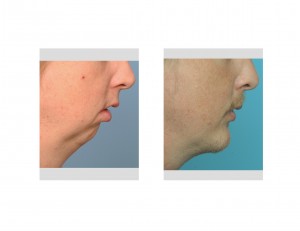
While having been done for a long time, chin augmentation surgery has undergone a surge in the numbers of procedures performed. In 2011, a 70% increase in chin augmentations was reported compared to the previous year according to statistics published by the American Society of Plastic Surgeons. News outlets have picked on this increase in chin augmentation surgery and have credited it to such recent electronic device interactions such as Skype on the internet and Facetime on the iphone. It is theorized that seeing one’s face on web cameras and smartphone pictures has increased awareness of chin deficiencies.

Another major driving force is the rise in two other specific facial procedures, rhinoplasty and facelifts. Both are being done by an increasing number of surgeons but facelifting treats a problem that eventually affects all of the population. The rise of numerous types of limited or less invasive facelifts has spurned a lot of attention in the younger patient with earlier signs of aging. This has drawn a lot more attention to how one’s face looks as it ages. Since facelifts focus on the shape of the jawline and the neck, any chin deficiency will be quickly recognized. Chin augmentation adds length to the jawline which helps in improving the smoothness of the jawline and the sharpness of the neck angle.
There may also be some influence, as had been suggested, that more people are seeing themselves than ever before. Whether by digital camera, smartphone or on Facebook, people are having to see more of themselves particularly in profile. When combined with an ever increasing desire to remain competitive in the workplace, change in social circumstances such as divorce and an ever increasing emphasis in society on looking and feeling younger, all types of facial rejuvenation procedures are increasing.
Put together, there are many reasons chin augmentation is increasing. But the main reason it continues to grow is because it is works. It is one of the most significant structural changes of the face, whether it is a small increase to complement a facelift or a major change to improve a naturally short jaw.
Dr. Barry Eppley
Indianapolis, Indiana


